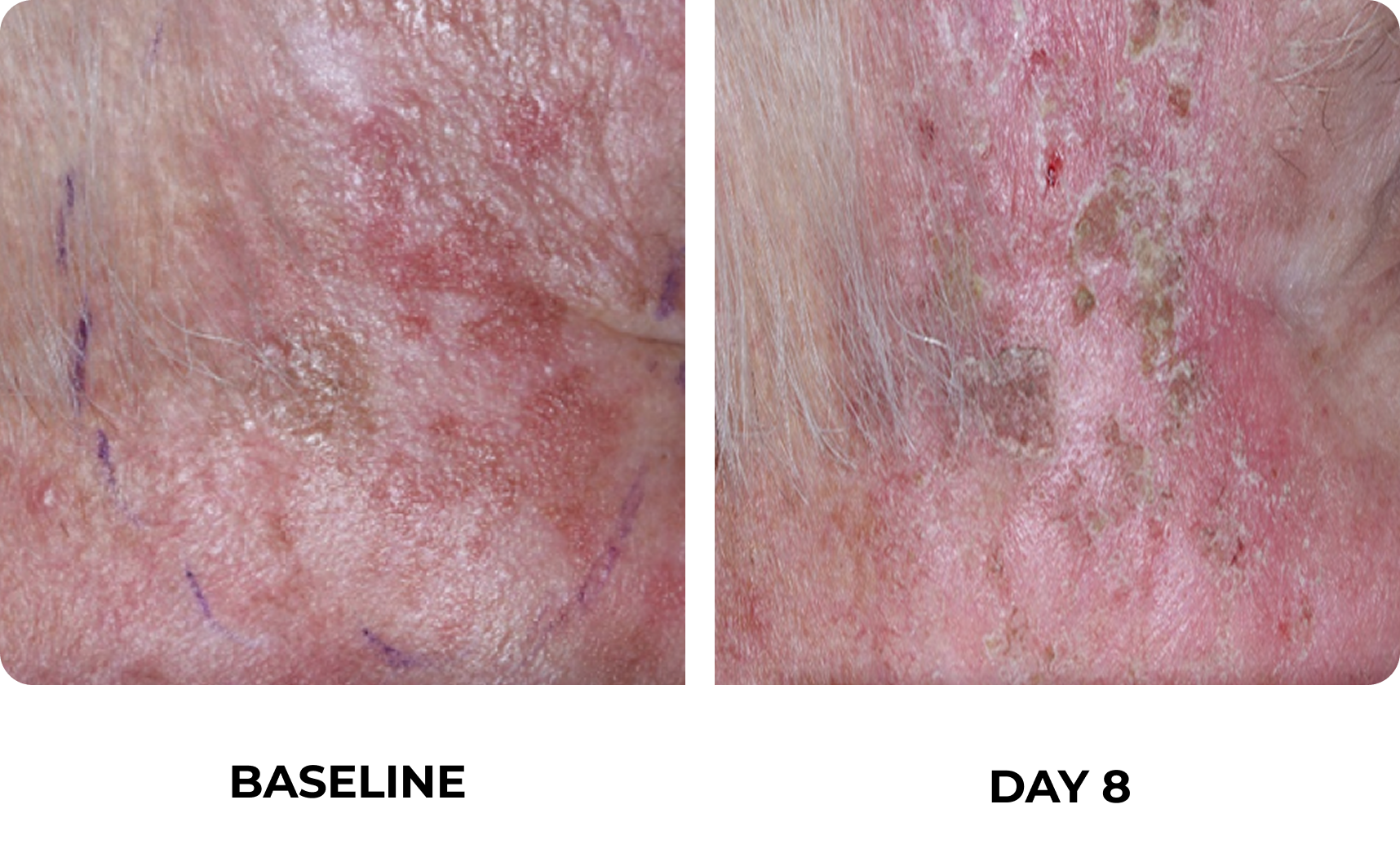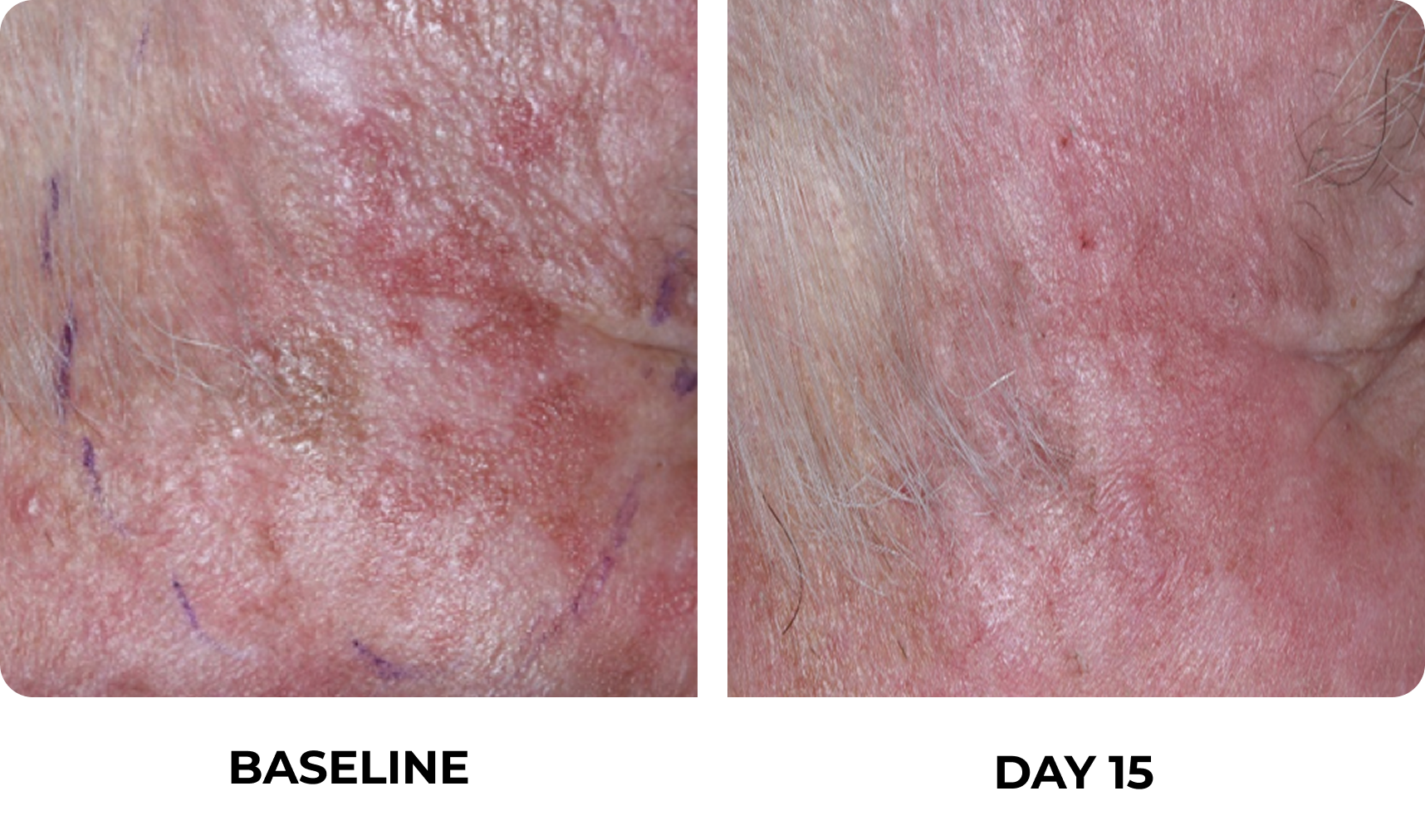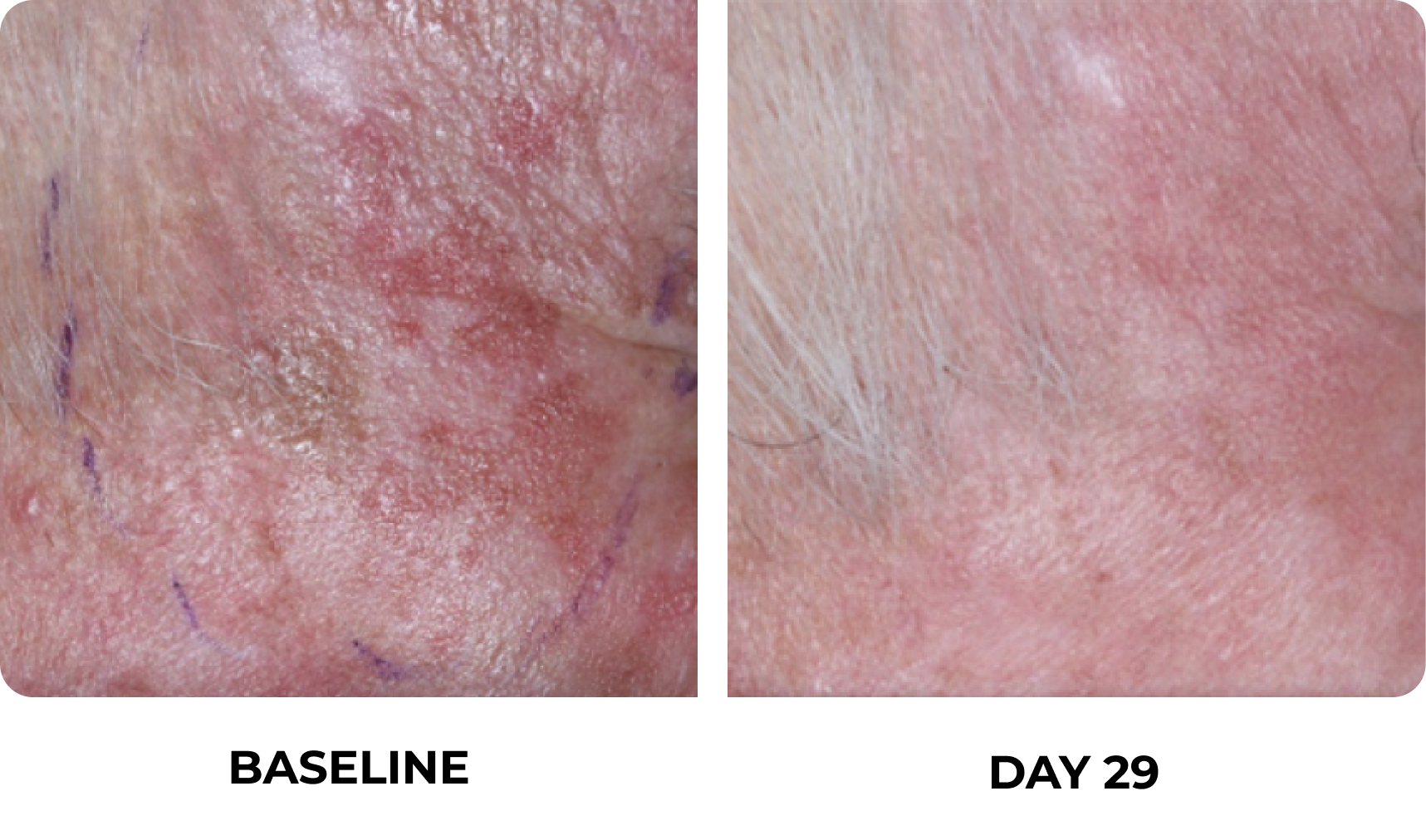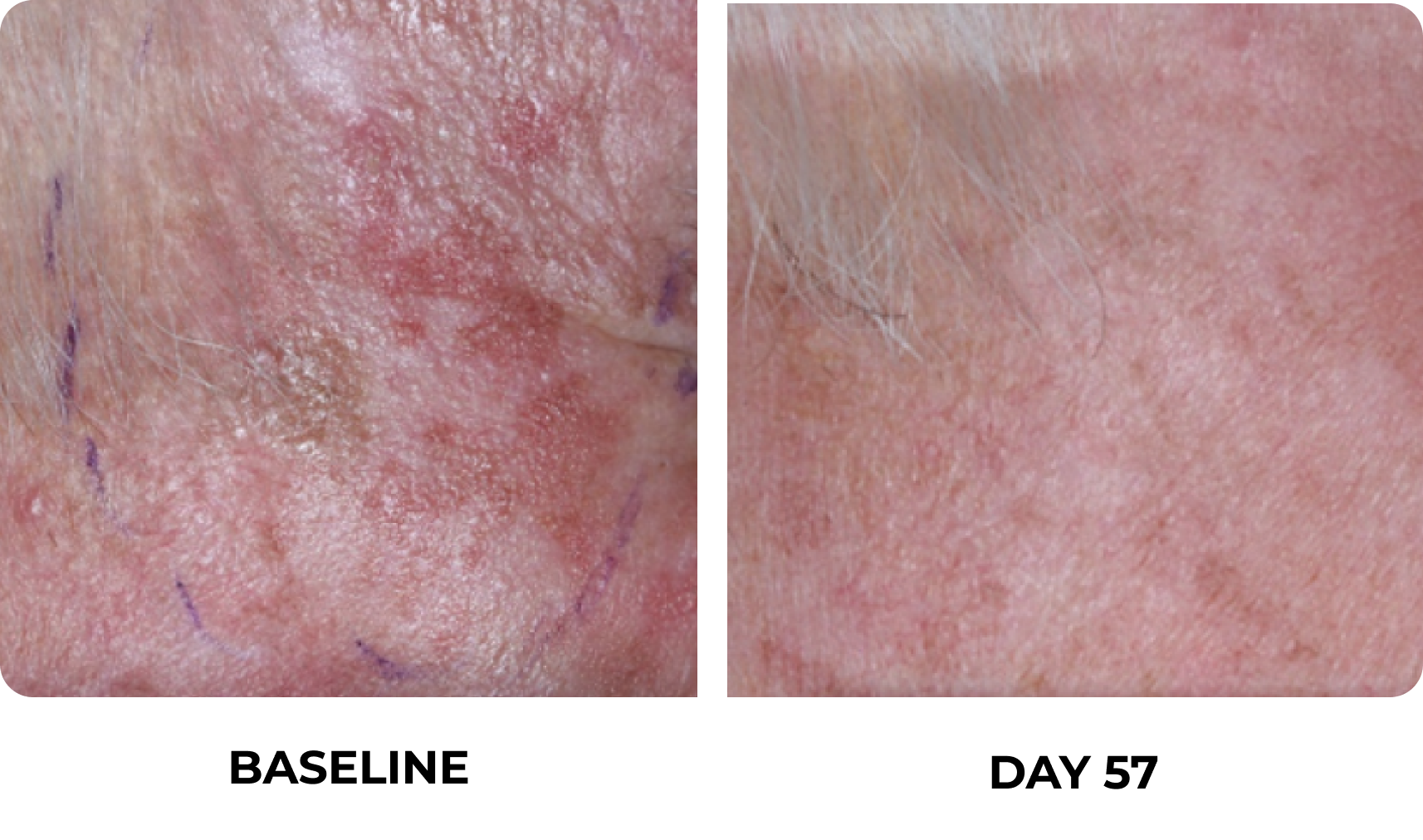Most local skin reactions were mild to moderate. The rates of severe local skin reactions
were1:
Erosion/ulceration: 0%;
Vesiculation/pustulation: <1%;
Swelling: <1%
Crusting: 2%
Erythema: 6%
Flaking/scaling: 9%
How does the rate of severe local skin reactions impact your cosmetically conscious patients' treatment compliance?
Not an actual patient. Results may vary.
VISUAL ASSESSMENT—Photos from baseline through Day 577
LOCAL SKIN REACTIONS: SEVERE (FACE)Local skin reactions peaked by Day 8, and by Day 29, all signs were at or below baseline in both incidence and severity.2,5,6

KLISYRI is a microtubule inhibitor indicated for the topical field treatment of actinic keratosis on the face or scalp.
IMPORTANT SAFETY INFORMATION WARNINGS AND PRECAUTIONS Ophthalmic Adverse ReactionsKLISYRI may cause eye irritation. Avoid transfer of the drug into the eyes and to the periocular area during and after application. Wash hands immediately after application. If accidental exposure occurs, instruct patient to flush eyes with water and seek medical care as soon as possible.
Local skin reactions, including severe reactions (erythema, flaking/scaling, crusting, swelling, vesiculation/pustulation, and erosion/ulceration) in the treated area can occur after topical application of KLISYRI. Occlusion after topical application of KLISYRI is more likely to result in irritation. Avoid use until skin is healed from any previous drug, procedure, or surgical treatment.
ADVERSE REACTIONSThe most common adverse reactions (incidence ≥2%) were local skin reactions, application site pruritus, and application site pain.
Please see full Prescribing Information.









